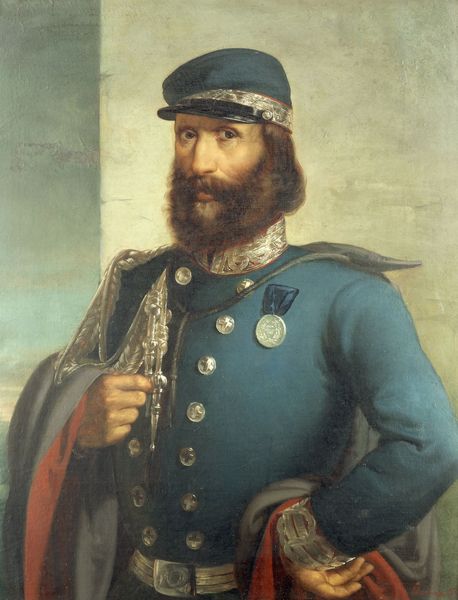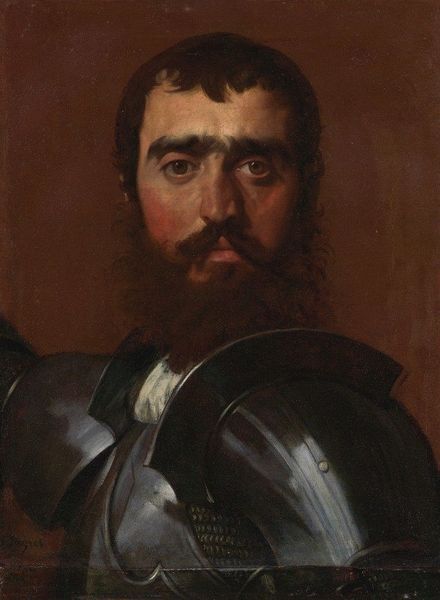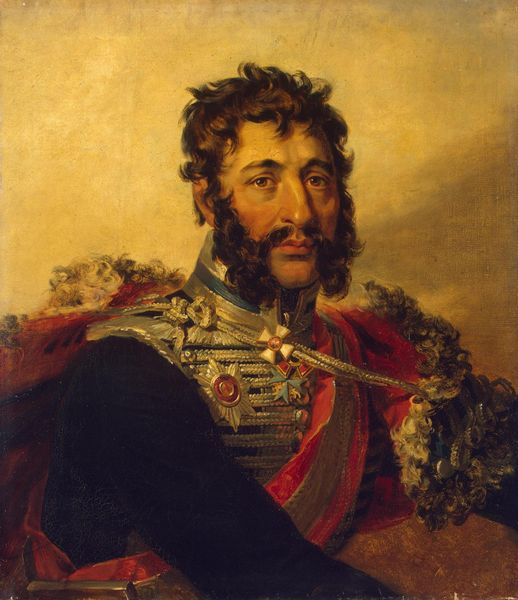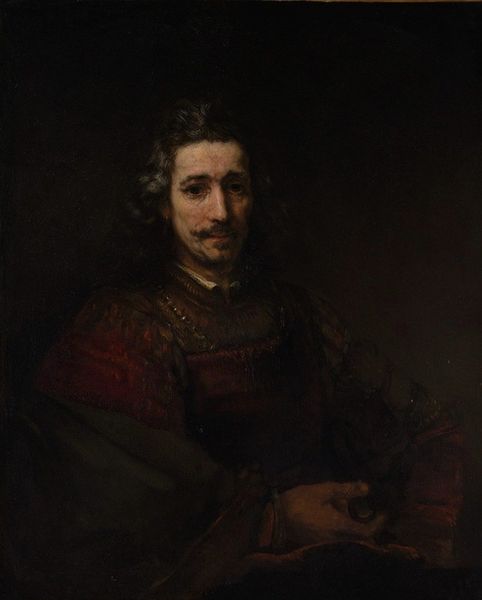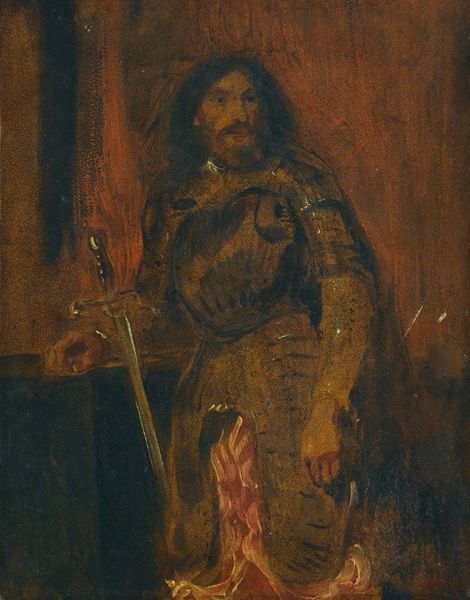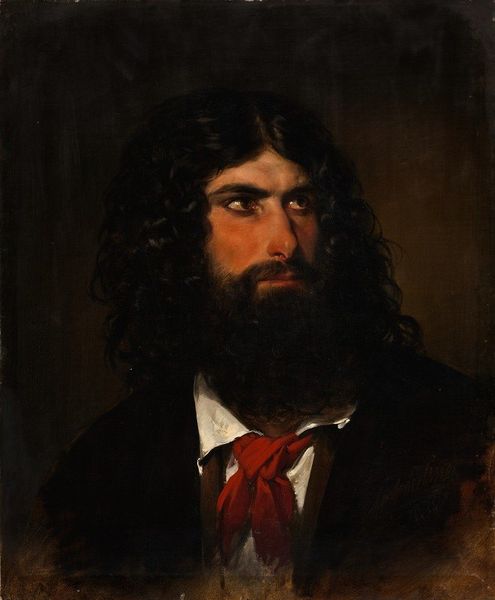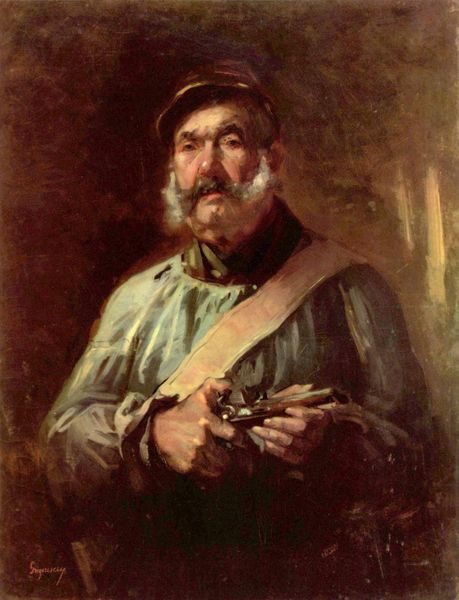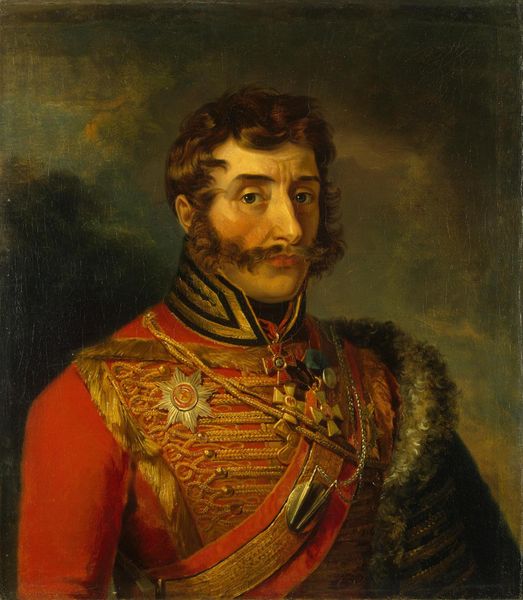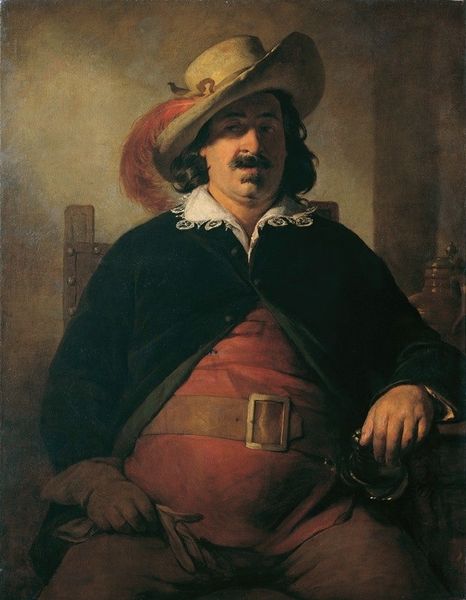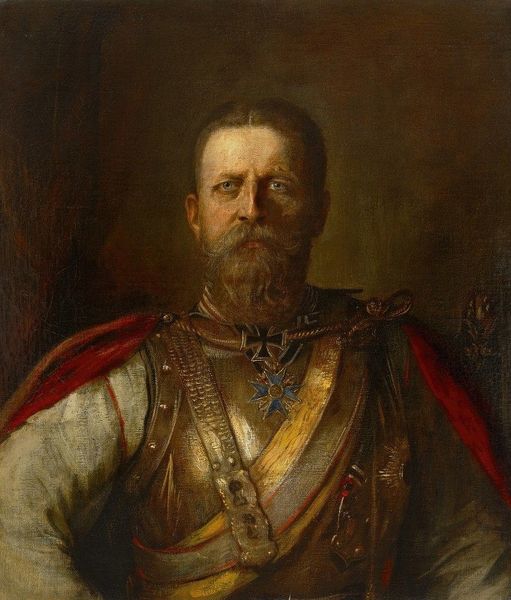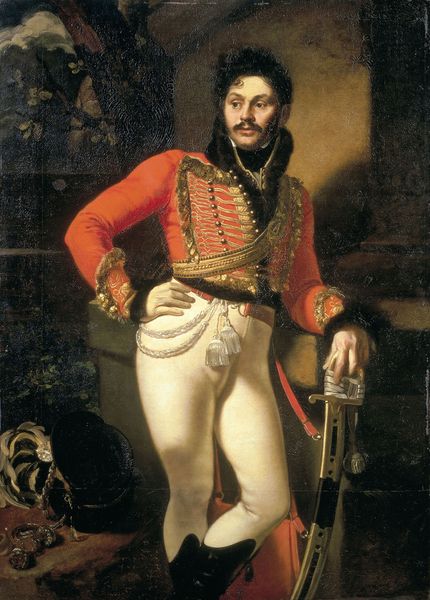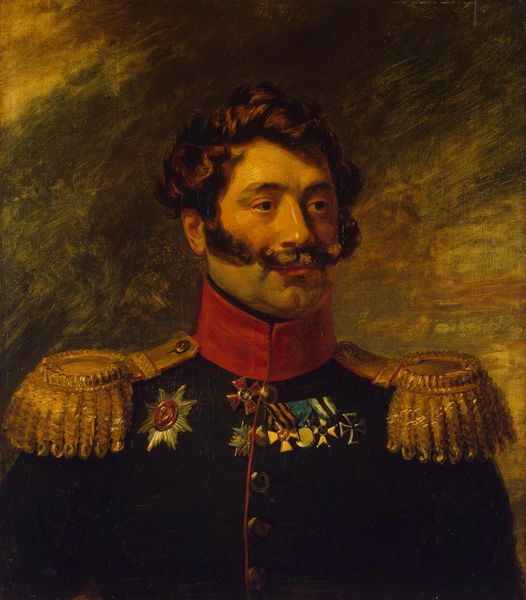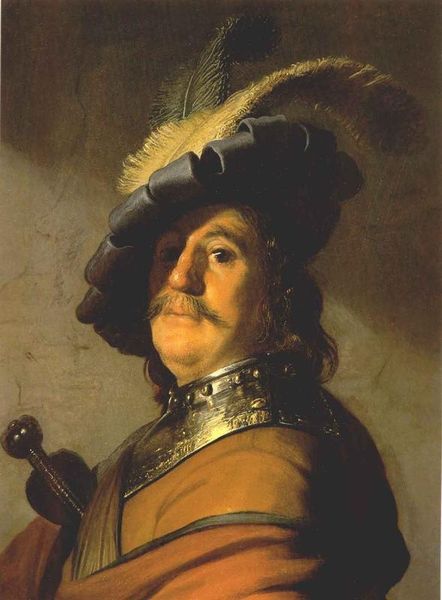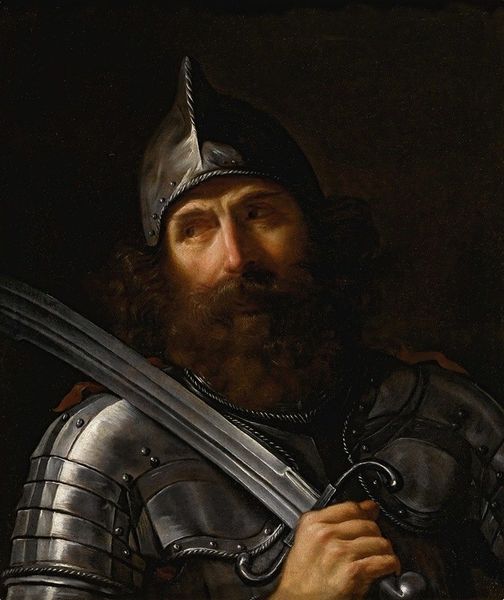
Copyright: Public Domain: Artvee
Editor: This painting, “Portrait of a Man,” made with oil paints sometime between 1875 and 1880 by Gyula Benczúr, strikes me with its rather intense focus on the sitter's gaze and somewhat antiquated attire. What particularly stands out to you as you observe the materials and techniques at play here? Curator: Well, first notice how the materiality performs status. This is not just "oil paint", but carefully chosen pigments manipulated through what was then a very expensive medium to create a convincing simulacrum of aristocratic power. Benczúr's brushstrokes—consider them marks of *labor*—aren’t trying to hide themselves, either; they declare, "I am a craftsperson skilled enough to perform this task." Doesn't the rendering of that ornate clothing practically *scream* social aspiration? How do you think the labor implied by this kind of realistic portrayal aligns or clashes with the romanticism and realism styles in this case? Editor: That's an interesting point about the labor itself being on display through the brushstrokes. I hadn't considered how that could reflect both craft and the sitter's social aspirations, rather than just pure representation. I was also initially thinking about romanticism as relating more to mood or idealization. Curator: Exactly. Think about the conditions of artistic labor and patronage in Hungary at that time. This piece blurs lines – celebrating both the sitter and Benczúr's mastery while negotiating the relationship between artistic craft and higher societal values. Does this perhaps also highlight a conflict present in realism? Editor: It certainly sheds a light on how seemingly straightforward portraits can be deeply embedded in complex social dynamics related to skill and cultural expression. Thank you for this materialist perspective.
Comments
No comments
Be the first to comment and join the conversation on the ultimate creative platform.
